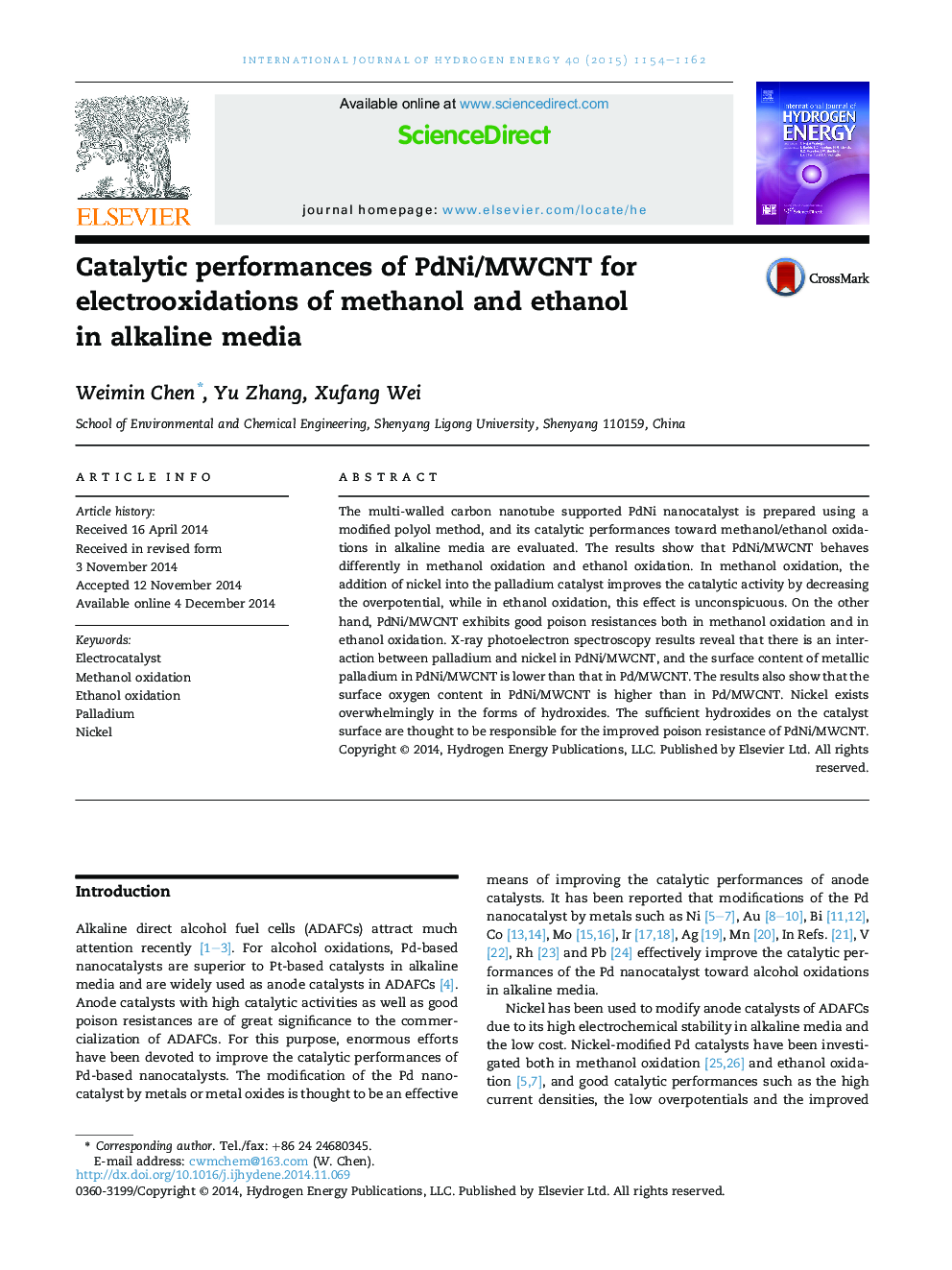| Article ID | Journal | Published Year | Pages | File Type |
|---|---|---|---|---|
| 1270211 | International Journal of Hydrogen Energy | 2015 | 9 Pages |
•The addition of Ni into Pd plays different roles in methanol and ethanol oxidations.•PdNi/MWCNT has a lower overpotential in methanol oxidation than Pd/MWCNT.•There is a synergetic effect between Pd and Ni in PdNi/MWCNT.•PdNi/MWCNT exhibits improved poison resistances in methanol/ethanol oxidations.•Hydroxides are responsible for the improved poison resistance of the PdNi catalyst.
The multi-walled carbon nanotube supported PdNi nanocatalyst is prepared using a modified polyol method, and its catalytic performances toward methanol/ethanol oxidations in alkaline media are evaluated. The results show that PdNi/MWCNT behaves differently in methanol oxidation and ethanol oxidation. In methanol oxidation, the addition of nickel into the palladium catalyst improves the catalytic activity by decreasing the overpotential, while in ethanol oxidation, this effect is unconspicuous. On the other hand, PdNi/MWCNT exhibits good poison resistances both in methanol oxidation and in ethanol oxidation. X-ray photoelectron spectroscopy results reveal that there is an interaction between palladium and nickel in PdNi/MWCNT, and the surface content of metallic palladium in PdNi/MWCNT is lower than that in Pd/MWCNT. The results also show that the surface oxygen content in PdNi/MWCNT is higher than in Pd/MWCNT. Nickel exists overwhelmingly in the forms of hydroxides. The sufficient hydroxides on the catalyst surface are thought to be responsible for the improved poison resistance of PdNi/MWCNT.
